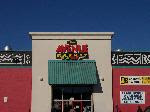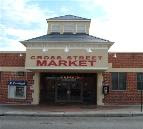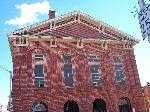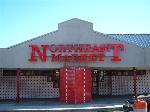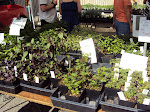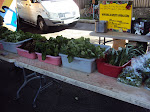Baltimore’s public markets are the oldest continuously operating public market system in the United States. This is just one of the things that make the city of Baltimore so famous. The markets are Baltimore’s oldest institution, older than its health department and even the Mayor’s Office.
I am fortunate to live near the Northeast Market. Before moving to Baltimore, I lived in Columbia, MD for a short time. I was fortunate to have every major grocery store chain near my home within a five minutes drive. But when I moved to Baltimore, I was amazed that there wasn’t much in the way of grocery stores. The closest store to me was the Safeway on Boston Street. Since I am a foodie, I have an uncanny ability to seek out food in even the most desolate food environments. I happened upon the Northeast Market and was just amazed. In researching the history of these markets I found that the first market was conceived when Baltimore was only 21 years old in 1751. That first market was completed in 1763 with the aid of a public lottery. Eventually, there were 11 Baltimore City Public Markets. Each market was originally constructed of wood and most had a second story which was used for assembly purposes; armory, political, social and entertainment. Most were plagued by fire at some point in time and now are built mostly of concrete, cinder block and brick. The original markets were open air stalls, but today, they are all enclosed structures.
Today, there are 5 markets; Avenue Market, Broadway Market, Cross Street Market, Hollins Market, and Northeast Market. In 1995 the Baltimore Public Markets Corporation (BPMC) was established as a non-profit organization to operate the public markets. In 2005, BPMC and Lexington Market Inc. entered into a co-teaming agreement. This was not a merger and the two entities still remain separate and distinct. Although the character of the markets has changed drastically over the last two centuries, they are still a significant institution that reflects the past and future character of the City’s neighborhoods.
Go and experience your nearest public market. Experience the personality of unique boutiques, eateries and fresh food, produce and bakery shops. They have just about everything your local grocery store offers; fresh meats, fish, produce, baked goods. You name it, your public market probably has it.
According the Baltimore Public Markets' website (http://www.bpmarkets.com/), these markets are considered the last stronghold of independent food merchants who trade on personalized service and the quality of their merchandise in an atmosphere that still reflects community. You should definitely support your local merchants and check out your closest Baltimore public market.
Tuesday, September 14, 2010
Subscribe to:
Comments (Atom)













































